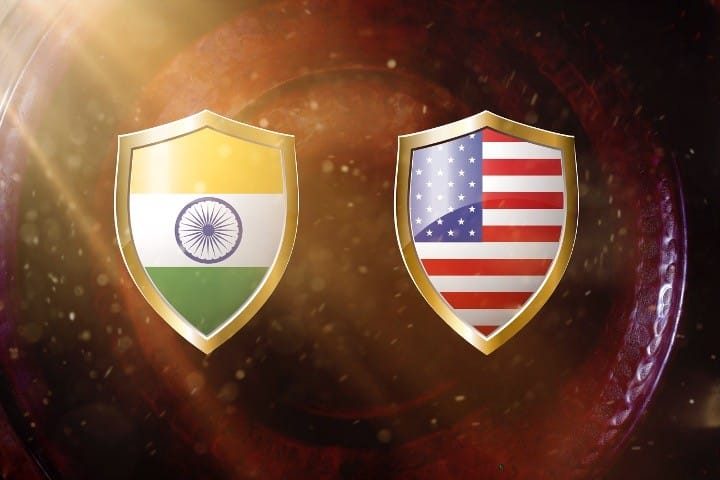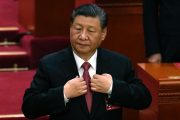
SINGAPORE — Indians regard the United States as the largest military threat after China and put more blame on NATO and Washington than on Russian President Vladimir Putin for his actions in Ukraine, based on findings from a new survey.
Around 43 percent of the 1,000 respondents deemed China — with whom India has a long-standing border contest and has seen hostilities rise again since 2020 — as the largest threat, the survey by Morning Consult, a U.S.-based global business intelligence company, revealed.
Twenty-two percent regarded the U.S. as the second-most prominent security threat, with India’s rival Pakistan trailing behind, the survey indicated.
“While the world’s two largest democracies would seem to make for natural partners, especially given their mutual mistrust of China, Indians have strategic reasons to be wary of the world’s Western superpower,” Sonnet Frisbie and Scott Moskowitz, who oversaw the survey released on January 17, remarked. “As tensions between Washington and Beijing increase, the Indian public may be worried about getting caught in the middle of a U.S.-China conflict that destabilized regional security, putting India at risk.”
Respondents’ worries about the risks from Washington persist notwithstanding the South Asian nation’s closer ties with the U.S., Australia, and Japan — or the Quad, a grouping of nations set up to tackle Beijing’s rising economic and military clout.
India has maintained its neutral stance on Russian actions in Ukraine in spite of pressure from its Quad partners. The nation has abstained from United Nations (UN) votes censuring Russia, simultaneously calling for a diplomatic solution to mitigate the food and fertilizer shortage catalyzed by the conflict. Furthermore, India has tapped on cheap Russian oil to fulfill its economic and energy needs amid rising energy prices due to U.S.-led sanctions on Russia.
The survey, conducted on Oct. 14-15 last year, showed that 60 percent of the respondents hope the government will continue buying oil from Russia, and 48 percent of them mentioned that Russia should continue to be India’s preferred military equipment supplier, compared to 44 percent for the U.S.
Additionally, around 49 percent hope Indian Prime Minister Narendra Modi’s government will continue military activities with Russia. More Indians blame the U.S. and NATO for leading to the war in Ukraine because “historical ties with Russia formed during the Cold War and India’s post-independence period run deeper than India’s relatively new relationship with the U.S.,” said Shumita Deveshwar, senior director of India research at TS Lombard. Russia as the primary provider of weapons and cheap oil to India is also “embedded in the mindset of the people, and that takes much longer to change,” she added.
As the world order shifts towards multipolarity, India, the huge South Asian country has had to delicately balance the interests of other great powers like the U.S., China, and Russia while asserting its own.
In recent years India has proactively courted closer relations with the U.S. and its Western allies to balance its top economic and military rival China. For instance, in January this year, India and the U.S. set up a new working group to establish sustainable supply chains and enhance bilateral trade. At first, this proposed working group will concentrate on trade facilitation, digitization of customs procedures, issues related to mobilization of sustainable finance, and scaling up of innovative clean technologies, a statement issued after a Trade Policy Forum meeting in Washington read.
During a meeting co-chaired by India’s trade minister, Piyush Goyal, and U.S. Trade Representative Katherine Tai, the countries concurred to carefully keep tabs on visa issues and boost talks on food and agricultural trade issues in 2023. Also, the U.S. will consider India’s restoration of beneficiary status under the U.S. Generalized System of Preferences program, the statement continued.
Rebooted in 2021 after a gap of four years, the Trade Policy Forum would restart on a ministerial level before the end of 2023, and the two countries said they hope to continue to cooperate on resolving significant trade issues. “Waiting for all-or-nothing comprehensive agreements will only slow our shared goal of achieving a US$500 billion (S$665 billion) trade relationship,” president of the U.S. Chamber of Commerce’s U.S.-India Business Council, Atul Keshap, declared.
India has refrained from taking sides in the Ukraine-Russia crisis and has avoided voting against Russia in the UN Security Council, much to the West’s chagrin. Yet it has encouraged Russia in bilateral meetings at the highest level to cease the conflict and seek diplomatic solutions. Strategic considerations including discounted Russian oil have been the key factors for this diplomatic tightrope that India has had to walk.
In a speech at the Group of 20 summit in Bali last year, Modi spoke of the need to prevent any “restrictions on the supply of energy” at a time when the U.S. is trying to restrict Russian oil. With India at the helm of the G-20 presidency, Modi tried to gather support among the developing nations of the Global South that are tackling economic issues from increasing oil prices to shortages in food and fertilizer.
“As far as India is concerned, your voice is India’s voice. Your priorities are India’s priorities,” Modi said recently at the start of a two-day virtual Voice of Global South summit of as many as 120 developing countries. “People of the Global South should no longer be excluded from the fruits of developments.” This meeting is one of the ways India is hoping to set up a pressure group as it assumes the chair of the G-20 nations.
“India has always stood for a greater role for developing countries in determining our common future,” Modi said at the summit. “In the 21st century, global growth will come from countries of the South.”
New Delhi is looking to woo developing nations over to its side as superpower rivalries intensify between the U.S. and China, particularly as it also has been impacted by rising commodity prices. “India, as a developing country, is more concerned about the rising prices and shortage of fertilizer, fuel and food,” said Sushant Singh, a senior fellow at the Center for Policy Research and guest lecturer at Yale University. “The G-20 provides a platform to India to raise the voices of these countries, and increase its bargaining power and standing in the grouping.”
“Over the last few decades, the South’s declining importance in the West’s priority list has led to the under-representation of Asia, Africa and South America in international forums,” added Shibani Mehta, who studies India’s diplomacy at Carnegie India. She elaborated that these matters will remain key in future G-20 summits in Brazil and South Africa.
Foreign policy analysts contend that there are both difficulties and opportunities in the wake of India’s desire to be a global leader and influence a multipolar world.
“For India, this is an opportunity to showcase perhaps its role as a global leader and to bring countries together to find solutions to global problems like climate change and energy. On all of these issues, the G-20 presidency allows India to articulate a consensus-building role across multiple stakeholders like the developing and developed world, and the West and countries like Russia that are looking in opposite directions,” said Professor Harsh V. Pant, vice president of studies and foreign policy at the Observer Research Foundation in New Delhi.
“The G-20 presidency is happening at a time of great global fragmentation and polarization. There is going to be pressure on India to perhaps behave one way or another (in Russia). India would be hoping that it would be able to continue trying to act as that bridge between Russia and the West.”
The G-20 presidency will also likely further enhance Modi’s image domestically as a robust leader prior to the 2024 elections, when he is gunning for a third term in power. Indian media reports said 200 G-20 meetings are organized through India’s presidency of the group. “This is an opportunity for India to make a mark as a global leader. Delhi must avoid the temptation to turn its presidency into a gimmicky year-long ‘festival of India’ in the run-up to the 2024 general election,” said an Indian Express newspaper editorial on Nov. 17.



